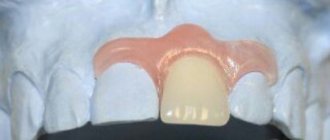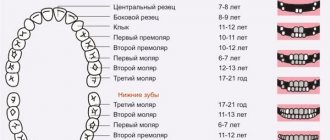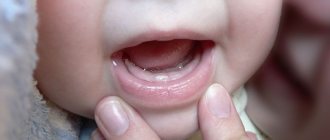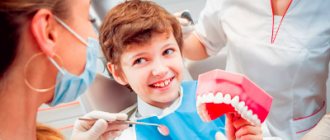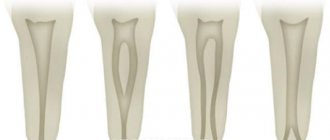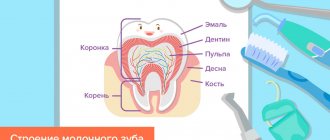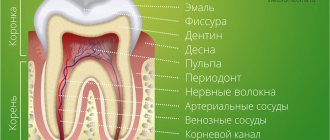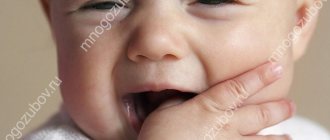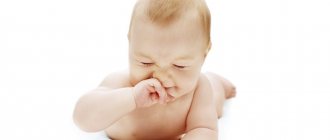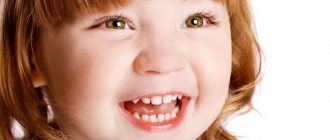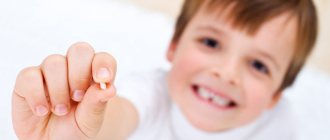Many of us remember from school that adults have 32 teeth, 16 of which are located both at the top and bottom of the oral cavity. You can often hear this information in advertising on television. But not everyone knows at what period teeth should erupt or how the absence of, say, wisdom teeth affects our body.
Every person, especially young parents, needs to know well how many baby teeth there are, when the molars appear, and what they are used for. All this information is needed to combat diseases of the oral cavity and the human body as a whole.
Names of teeth, their types
Incisors, canines, premolars and molars make up the dental arch. To make it easier to remember, the teeth were numbered from 1 to 8:
- 1 and 2 - incisors;
- 3 - fangs;
- 4 and 5 - premolars;
- 6, 7, 8 - molars.
Having examined and delved into the numbering and names, you understand what kind of teeth a person has. But each tooth has its own specific functions and is responsible for certain processes during eating.
For example, the incisors give a person the ability to bite off pieces of food; fangs help capture food; premolars and molars help grind food and make our cheekbones more aesthetic, as they have an angular position.
How many teeth should a child have at 3 years old?
All twenty baby teeth appear by about 2-2.5 years. It includes eight incisors and molars, as well as four canines. By this time, they are erupting, including in the wrong direction, but by the age of three, in most cases they occupy a normal position, since the child is actively chewing food.
If by the age of three a boy or girl does not have a full set, do not panic. This may be an individual characteristic of the child. To be sure, it is advisable to consult a pediatrician and dentist to clarify the cause of the delay and rule out rickets, metabolic disorders or endocrine diseases.
Children's dentition and everything about it
All parents carefully search for information about the correct number of teeth in the baby’s mouth in relation to his age. They are often interested in shape and size. It is worth remembering that the information received should not exempt the child from visiting the dentist for preventive purposes. Sometimes there may be congenital manifestations of anomalies in the oral cavity. We are talking about defects in the growth of teeth, as well as their incomplete composition in the upper or lower jaw.
Directly, baby teeth do not remain in the oral cavity throughout life, but only for a limited time, after which they fall out. After them, permanent ones grow up, which stay with the person for life, provided they are treated with care. Primary and permanent teeth have a number of differences, namely:
- The incisors of baby teeth have a more convex shape.
- Permanent teeth have a more developed root system than baby teeth, which fall out without causing discomfort.
- The enamel of primary teeth is thinner, but their pulp capsule is more pronounced. Baby teeth are more susceptible to caries.
The first teeth begin to appear at 4-5 months, but a delay of six months is not a violation. There is a certain sequence in which a baby’s first teeth appear:
- Incisors: central ones appear from 4 to 9 months, and lateral ones are expected from 8 months to 12 months.
- The first molars appear after the child is one year old.
- Clicks are expected from 1 to 2 years.
- By the age of 3, the second molars begin to emerge.
It is worth noting that at the age of three, a baby already has about 20 teeth in his mouth. Then, in their further growth, a pause is expected until the child reaches 5 or 6 years of age.
After a year, teeth appear with the following frequency:
- by 12-15 months – two pairs of first molars erupt;
- by 18-20 months – a pair of upper and a pair of lower canines are already clearly visible;
- 20-30 months is the period of appearance of two pairs of second molars.
How many teeth should a child have at 1 year 3 months? Ideally 12, but the number can change in one direction or the other, and this is not considered a deviation. The frequency of teething is influenced by many factors, including previous infections, heredity, climate, and health status.
The question of how many teeth a child should have at 1 year 8 months, or 20 months, also cannot be answered unambiguously. The answer will be approximate - about 16. Up to a year, parents should focus on the approximate formula: the number of months minus 4, with a reservation for the baby’s characteristics.
Scheme - schedule for changing teeth in children:
- The central incisors are subject to renewal at the age of about 5 or 7 years, soon followed by the lateral ones.
- From 9 to 11 years the first molars are expected.
- At the same time as the molars, the canines also change.
- In the period of 10-13 years, the second molars also emerge.
By the age of 13, a teenager’s mouth can already count about 28 teeth. If there is a one-year delay in their appearance, it is recommended to consult a dentist. An adult must have at least 28 or 32 teeth. It must be remembered that from the age of five there begins a period of replacement of milk teeth with those that will be with a person throughout his life.
Typical problems.
The most typical problem between the ages of 3 and 6 years is the development of caries of primary teeth in the area of the first and second primary molars. The narrow interdental spaces between the first and second primary molars, which are difficult for a child to reach, are an ideal place for plaque to accumulate. As a result, caries forms on the surface of the teeth hidden from the eyes of parents (between the 4th and 5th milk teeth). Being unnoticed, the carious process quickly progresses, complicated by inflammation of the nerve of the tooth (pulpitis).
With poor oral hygiene and a large number of carious teeth, caries of the permanent molar (6th tooth) often develops, high-quality treatment of which is only possible by a pediatric dentist.
Symptoms of baby teeth erupting
Each baby reacts individually to the eruption of baby teeth, however, there are characteristic symptoms by which parents can understand that this is happening:
- heavy salivation;
- redness and swelling of the gums;
- itching
Severe itching and sometimes even painful sensations make the child capricious. He becomes restless, which disrupts his sleep. To somehow relieve the itching, children put toys in their mouths and intensively rub their gums. Children often refuse to eat or eat with less appetite. What does the gum look like when teeth come in? Changes in the condition of the gums are one of the criteria by which parents can differentiate teething. The gums in this place look inflamed - they turn red, swell, and immediately at the site of tooth eruption they become white.
However, the biggest concerns about the child’s condition are cough, runny nose, and fever during teething. Indeed, the appearance of baby teeth in its symptoms can resemble colds, and it is difficult for parents without experience to understand whether the baby is sick or is just teething.
First of all, you need to understand that both fever and cough during teething in children are acceptable reactions. Cough, hoarseness, and runny nose are most often the result of excessive salivation. For the same reason, during teething, babies develop a rash on the chin and around the mouth.
Another frequently asked question from parents is what kind of stool can a child have when teething? During a particularly acute period of teething, babies may have weak stools, which is associated with general irritation of the nervous system and has nothing to do with eating disorders.
However, it must be taken into account that when babies are teething, they are more susceptible than usual to various infections. If unpleasant symptoms (fever, diarrhea, cough) do not go away on their own after 2-3 days, the child should be examined by a doctor.
How long does teething take for babies?
With normal development and growth, baby teeth erupt within a few days (2-8 days), and the most unpleasant symptoms usually appear within about 2 days.
The period of formation of the primary occlusion ends at 2-3 years, and at this moment the baby has 20 primary teeth.
Problems and complications when the first teeth appear
Sore gums, fever, poor appetite and indigestion are, although unpleasant, acceptable symptoms during the eruption of baby teeth.
In some cases, children experience complications:
- long delay - can be either a genetic feature or pathological adentia (if the child has not formed the rudiments of teeth);
- formation of a hematoma (cyst) - in this case, the gum above the growing tooth acquires a dark purple tint, then a lump or hematoma appears in this place, which may be due to both difficult eruption (the tooth cannot cope with the mucous membrane) and other reasons;
- violation of the order of teething;
- aphthous stomatitis - rashes on the mucous membrane in the form of purulent ulcers;
- enamel hypoplasia – occurs in babies under 10 months of age;
- malocclusion - improper closure of teeth, crowding, possible problems with the eruption of permanent teeth in the future.
If your baby experiences “difficult eruption” of primary teeth or you encounter the listed complications, you should definitely consult a pediatrician. If the formation of a primary occlusion is clearly incorrect, consult an orthodontist.
Preventing dental problems
To prevent the tiny pearls in your baby’s mouth from starting to turn black, deteriorate, hurt and crumble, you need to:
- Introduce complementary foods and solid foods at the recommended times.
- If your baby is allergic to milk proteins, you can try adding sesame seeds to the food. This product is a leader in plant calcium content.
- Make sure that your baby’s food contains the required amount of microelements and vitamins.
- Wean off pacifiers, bottles, and thumb sucking for up to a year.
- Avoid sugary drinks at night and during sleep.
- Observe hygiene rules when using baby utensils and pacifiers. You should not lick a pacifier or spoon and offer it to your baby.
- Most often, a two-year-old baby goes to kindergarten for the first time. Before this event, it is advisable to sign up for a procedure for examining and sanitation of the oral cavity.
Did you like our content? Subscribe to the channel in .
Oral care
Going to the pediatric dentist with a swollen cheek and molars destroyed by caries is the worst option. It is better to prevent dental diseases by following the rules of oral care.
Follow these guidelines:
- Buy your daughter or son a beautiful toothbrush and tasty toothpaste without fluoride.
- Shop together to choose what your baby will definitely like.
- Apply the paste to the brush in a minimal amount, no more than a pea.
- Record the time for cleaning, spend at least 3 minutes on the procedure.
- Conduct preventative conversations about the benefits of oral hygiene.
- Tell a scary tale about dental monsters that destroy molars if you don't brush them before bed.
- Watch an educational cartoon together, read a fairy tale, or make up one yourself so that your child understands why his teeth hurt.
- Don't trust three-year-old toddlers to clean their mouths on their own. It is better to carry out a control procedure for several months.
- Treat the initial stages of caries with silvering.
This is a safe and beneficial procedure. It helps to avoid early removal of incisors, is used as a prevention of destruction, and replaces filling.
Adviсe
While the baby is still toothless, parents carefully monitor the growth of the first tooth, often look into the mouth, and monitor the condition of the gums. When a lot of molars grow, they forget about it. We will give some useful tips on how to prevent serious dental problems in young children.
- Examine your baby's mouth frequently at home. Check for stains, chips, and plaque.
- Every mother should have a dental chart for children under 3 years of age.
With its help, it is easy to track the pattern of incisor eruption, the norm by number and age. - Teach your child to brush their teeth 2 times a day. Use games, tasty pasta and other methods of teaching hygiene, set an example.
- Visit your dentist regularly, at least 2-4 times a year. The doctor will notice defects in jaw development in time, tell you how and in what order teeth should be cut, and why they are deteriorating.
Important! The most important condition for maintaining dental health is attention and control from parents.
Problems with teething
- Painful sensations in a child. To alleviate the baby’s condition, doctors advise using an anesthetic gel, and also allowing the baby to chew on special chilled teethers.
- Temperature increase. In some children, when another tooth appears, the fever can reach +38.5ºС. In such a situation, you cannot do without an antipyretic drug, which should be recommended by a doctor.
- Copious secretion of saliva. This phenomenon causes great discomfort in the child, especially if the saliva from the baby’s chin is wiped with a towel, which leads to irritation and rash. If saliva enters the respiratory tract, it can cause coughing. If excess saliva enters the baby's stomach, this can lead to digestive upset. Mom should blot the saliva with a napkin and treat the skin around the mouth with baby cream.
- Delayed eruption. Its causes may be a lack of calcium in the diet, metabolic disorders, rickets, vitamin deficiency or endocrine pathologies. To determine why teeth are not “in a hurry” to appear, you should visit the dentist with your child and have an x-ray of the jaws taken. A visit to the doctor is indicated if at least one tooth is missing by one year.
- Violation of the order of eruption. This may be caused by the individual characteristics of the child or be a manifestation of the absence of the rudiments of some teeth. The dentist will help clarify the situation.
- Eruption of “extra” teeth. This situation occurs due to mutation and is manifested by the eruption of more than 20 baby teeth in children. The phenomenon is called polyodontia.
Adentia – complete or partial absence of tooth germs
Separately, we should talk about the development of adentia in children - the absence of tooth germs, which can be partial or complete. The disease can be caused by a malfunction of the endocrine system or an infectious disease.
If the process of eruption occurs with serious deviations from the norm, it is necessary to seek medical help. Using an x-ray, the dentist will determine whether there is a tooth germ in the gum and prescribe treatment aimed at restoring the dentition.
If complete primary adentia is detected, which is extremely rare, the doctor may recommend prosthetics. But for young children, this option is not a panacea, since the pressure of the prosthesis on the jaw can lead to disruption of its growth. The child should be regularly monitored by a specialist. Dentistry is developing rapidly, and there is hope that soon such children will be able to be helped more effectively.
Causes of early or delayed appearance of teeth
Typically, a child’s first baby teeth begin to erupt at the age of 6 months. But it is not at all a deviation if the first teeth began to appear earlier or later than six months of age. This may depend on various factors such as:
- climate of the area of residence;
- genetic inheritance;
- the course of pregnancy;
- complications during childbirth;
- maternal nutrition during pregnancy;
- mother's nutrition during breastfeeding;
- quality of drinking water.
Even if the first tooth erupts earlier or later than the generally accepted date, the order in which subsequent teeth erupt will not change.
Molars are being cut: symptoms
The first characteristic symptom of the beginning of the eruption of molars in a baby is that his jaw begins to increase in size. If the gaps between the baby teeth are quite small, then the body prepares to replace them with permanent ones - it creates all the necessary conditions for the growth of “adult” teeth.
The first molars announce their appearance quite seriously. This period brings the most pain to children and troubles to parents. The child sleeps poorly, becomes capricious, irritable, and may lose his appetite. Symptoms of molar teething may include a runny nose or cough, or an increase in the baby’s body temperature. According to doctors, these are not obligatory signs of eruption of molars; to a greater extent, they appear against the background of a general decrease in immunity and an increase in the vulnerability of the child’s body.
But, in any case, once the child reaches one year of age, parents should carefully monitor the child’s condition, the appearance of the symptoms described above, and act competently to relieve the baby’s unpleasant pain.
An almost obligatory sign of eruption of molars is increased salivation. At the second stage of tooth formation, this symptom is not as pronounced as the first time, but it can also cause inconvenience. By the age of 6-7 years, a child can already be taught to wipe his mouth and cheeks on his own, with a handkerchief or sterile napkins. If this is not taken care of, irritation will appear on his lips, cheeks and chin due to the increased sensitivity of the delicate baby skin (there are many different bacteria in saliva).
The eruption of molars in a child may be accompanied by symptoms such as diarrhea for several days. In this case, loose stools are a consequence of an infection entering the child’s body. The reason for this is that the baby often puts dirty hands or other objects into his mouth; copious salivation contributes to this, regularly washing the intestines. Short-term diarrhea (no more than three times a day) without the admixture of blood bodies is not dangerous for the child. But a doctor’s supervision will not be superfluous, since during this period, with a weakened child’s immune system, a new infection may be added and all symptoms may worsen.
Timing and order of eruption of permanent teeth
Normally, the eruption of permanent units occurs 3 to 4 months after the loss of baby teeth. In girls, this process occurs a little earlier and faster than in boys. In both sexes, the first lower molars appear first. Then the sequence of eruption of permanent teeth is approximately the same as for milk teeth and looks as follows.
- 6 - 7 years - central incisors.
- 7 - 8 years - lateral incisors.
- 9 - 12 years - fangs.
- 10 - 12 years - premolars.
- 10 - 12 years - molars.
The eruption of the second molars completes the formation of the permanent dentition.
